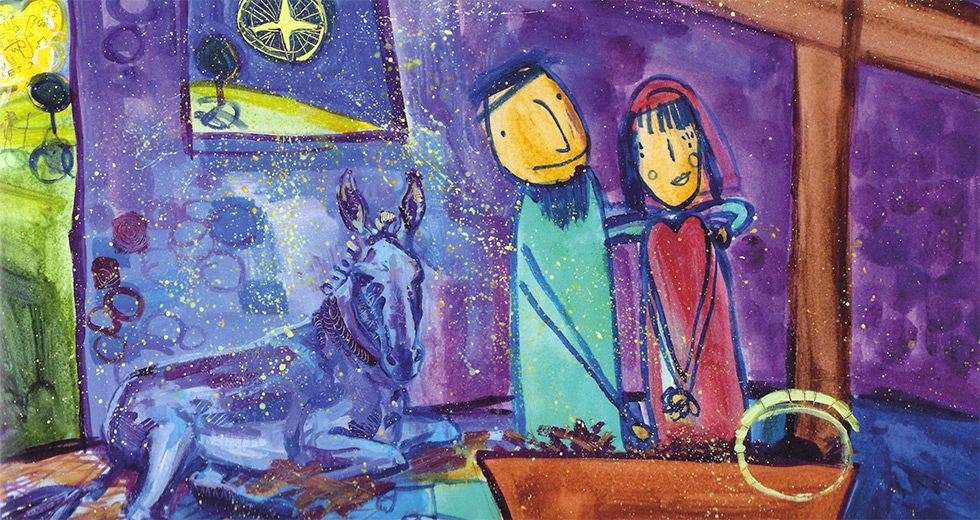Christmas: Where Joy and Pain Embrace

It is Christmas, a time of celebration around a child whose birth will bring good news of a great joy which will come to all the people.
Still, with all the joy expected, the situation that surrounded the birth of the child Jesus did not look so joyous. How could joy come through a child born in such a difficult situation? When his parents kept knocking on doors looking for a place to give birth? And the mother ended up laying her first-born son in a manger, because there was no place for them in the inn? How could joy ever come from a situation like this?
In my last visit to Iraq, visiting the prison of women in Kirkuk with the local church, I was surprised to see in the middle of the room five children born in prison from mothers who were sexually harassed. The kids were playing happily in an unexpected playground. There was lots of suffering in that prison, but joy was there—joy of the kids who were happy to receive the sweets from the church and joy of the church trying to bring a smile to the mothers and children in prison even as the church herself struggles with lots of pain from war.
This is a season where joy and pain come together, and we remember the words that Mary received from Simeon and did not understand:
“Behold, this child is set for the fall and rising of many in Israel, and for a sign that is spoken against (and a sword will pierce through your own soul also), that thoughts out of many hearts may be revealed.” (Luke 2:34-35)
Mary experienced the joy of having a child and pain in her soul as well. She became indeed as the real declaration for the way God works through women. The birth of Jesus started with women and his life ended with women. Christmas is a time to focus on how God works through the least expected and most difficult ways where joy and pain embrace.
As the WCRC we celebrate joy at this time with the news coming from our churches around the world; still, stories of struggle around our Communion and the world tune our song for Christmas. We remember together the flood in Kerala, India; and tsunami in Sulawesi, Indonesia; ongoing unrest in Cameroon; struggles for reconciliation in Korea, the Middle East and Colombia; the war in Syria and Gaza; the struggle of all marginalized within the church.
The world recently celebrated awarding the Nobel Peace Prize to two people, Denis Mukwege from Democratic Republic of Congo and Nadia Murad from Iraq “for their efforts to end the use of sexual violence as a weapon of war and armed conflict.” Nadia Murad, in addressing the government in Iraq says, “You can take all the prizes of the world and give me back my dignity and the dignity of my people.” Murad held together the joy of the prize and her pain as a person who was sexually harassed, hoping that in allowing joy and pain to embrace there will be a new beginning for women who suffer violence.
This is how we celebrate Christmas, where the stories of pain around the world open our eyes for a new possibility of hope. Unless we allow the Holy Spirit to work through us, to uncover to us where pain dwells in our midst, we cannot move to perceive hope and how Emmanuel could dwell among us.
For all those who are struggling today, the Christmas story affirms to us that Emmanuel remains with us even when we suffer. It challenges us to keep the glimpse of hope and joy even when all around us sounds far from joyous. The birth of Jesus is a story of pain and joy embracing. Hope will have the final word, and the dignity of the people will be surely retained. The story of Jesus empowers us as a communion to not be discouraged when pain remains around the world, but to remain in the spirit of hope called to communion and committed to justice.
Have a blessed Christmas!
Rev. Najla Kassab
President, World Communion of Reformed Churches
Image courtesy of 40: The Biblical Story Interpreted by Joel Schoon-Tanis.
 World Communion of Reformed Churches
World Communion of Reformed Churches